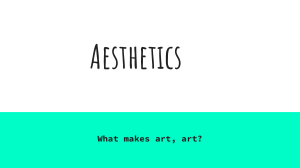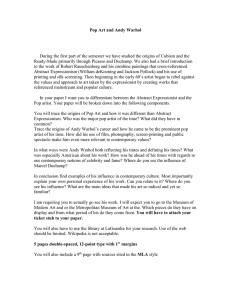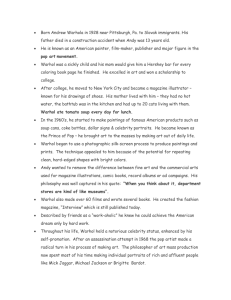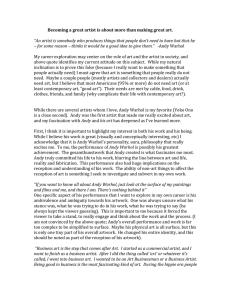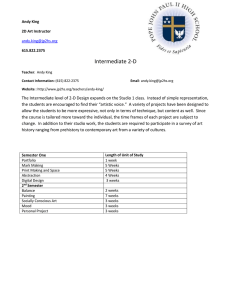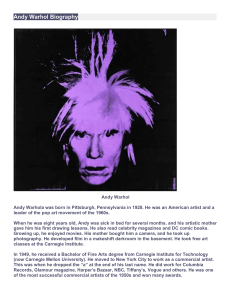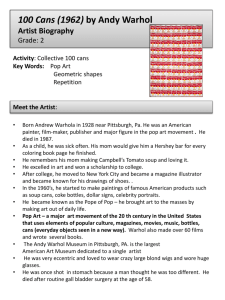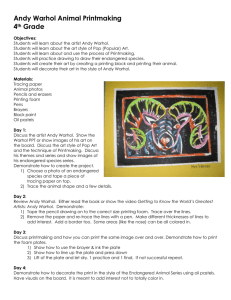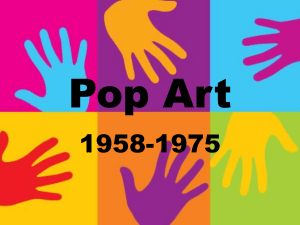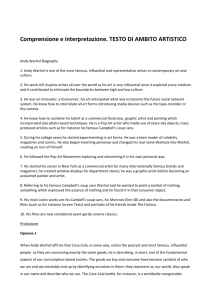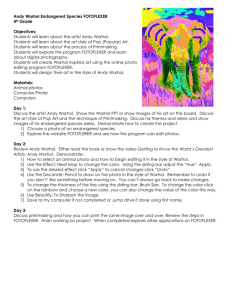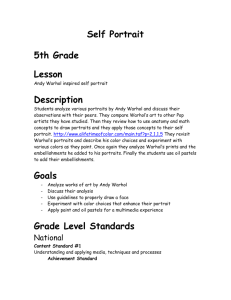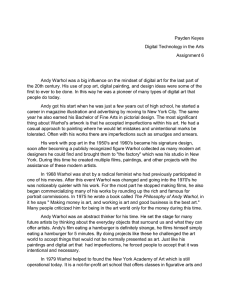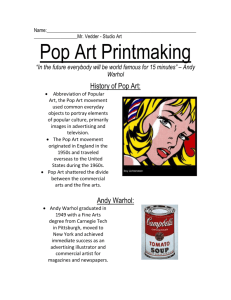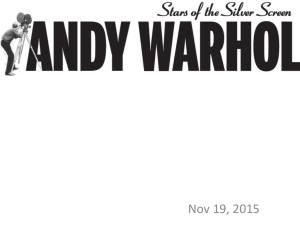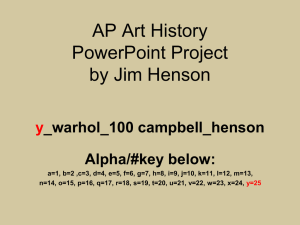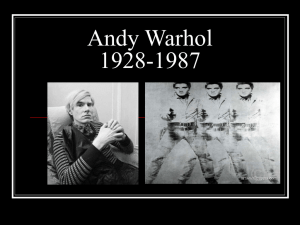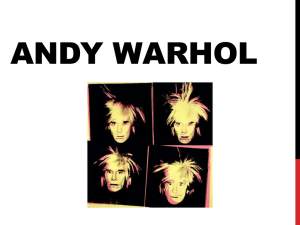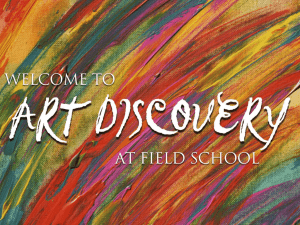Snow Day 1 - Russell County Schools
advertisement
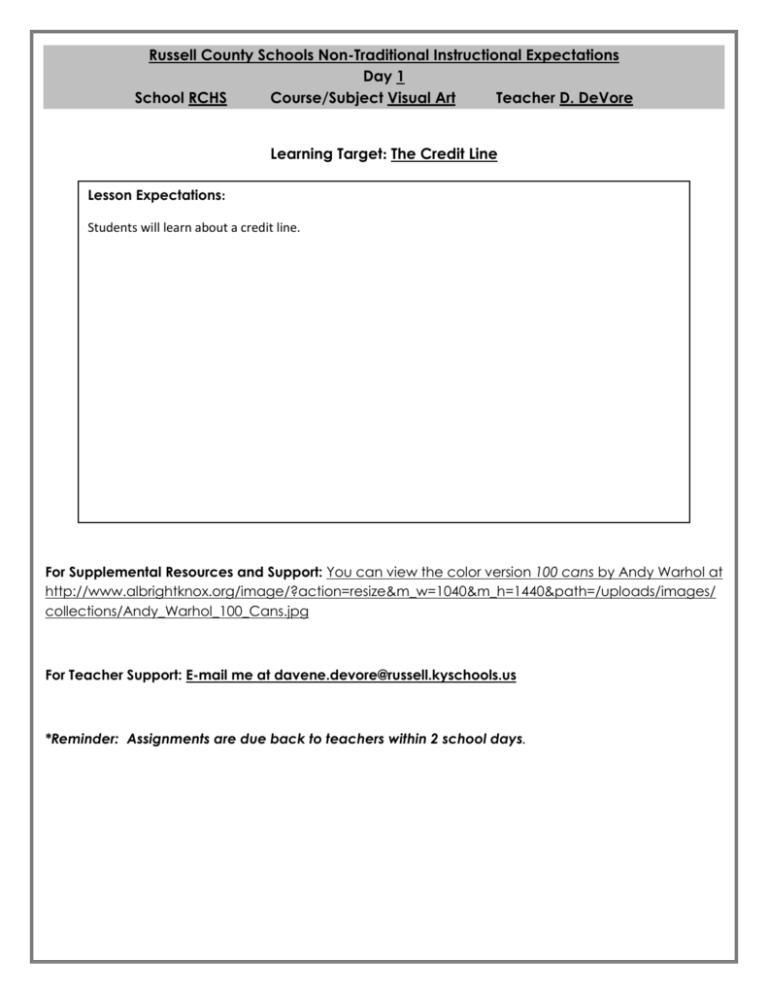
Russell County Schools Non-Traditional Instructional Expectations Day 1 School RCHS Course/Subject Visual Art Teacher D. DeVore Learning Target: The Credit Line Lesson Expectations: Students will learn about a credit line. For Supplemental Resources and Support: You can view the color version 100 cans by Andy Warhol at http://www.albrightknox.org/image/?action=resize&m_w=1040&m_h=1440&path=/uploads/images/ collections/Andy_Warhol_100_Cans.jpg For Teacher Support: E-mail me at davene.devore@russell.kyschools.us *Reminder: Assignments are due back to teachers within 2 school days. Art Snow Day 1 Credit Line A credit line is a list of important facts about a work of art. You will find credit lines not only in art books, but also other publications with artwork. Most credit lines contain at least six facts. They are as follows: Name of the artist. Title of the work. This always appears in italics. Year the work was created. Sometimes, in the case of older works, "c" appears before the year. This is an abbreviation for circa, a Latin word meaning "about" or "around". Medium used by the artist. This is the material used to make art. If more than one medium is used, the credit line may read "mixed media". Size of the work. The first number is always the height, the second number is the width, and if the work is three-dimensional, the third number indicates the depth. Location of the work. The location names the gallery, museum, or collection in which the work is housed and the city, state, and country. The names of the donors may also be included. Look at the Andy Warhol artwork and answer the questions below. 1. What is the title? 2. What medium was used? 3. Where is this artwork now? 4. What year was this completed? 5. Who is the artist? Andy Warhol. 100 Cans. 1962. Oil on canvas. 72” x 52”. Allbright-Knox Art Gallery, Buffalo, New York, USA.
